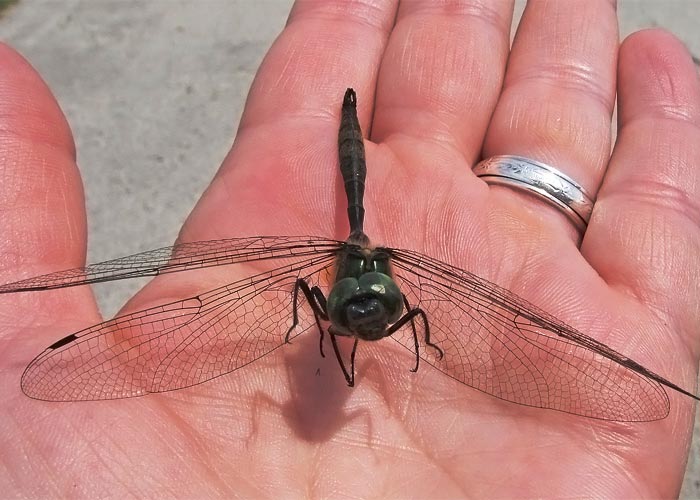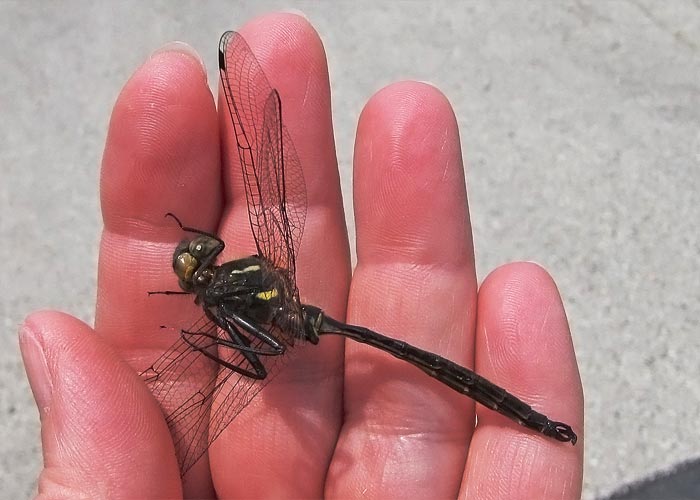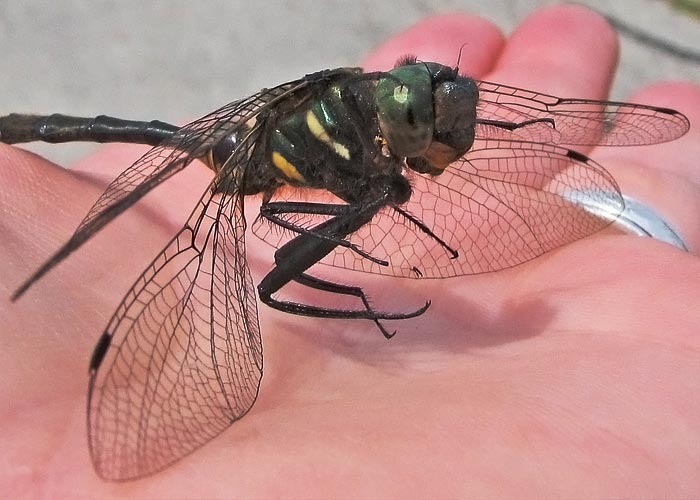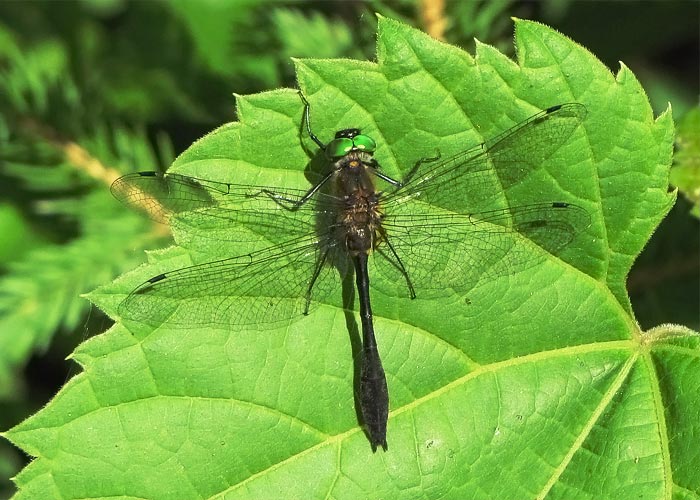Howdy, BugFans,
Hine’s Emerald Dragonflies
It’s the stuff that movies are made of. On the final day of the Dragonfly Workshop at the UWM Field Station in 1999, on the final sweep of the day, an astounding find. A Hine’s Emerald Dragonfly. The present range of Hine’s Emerald (HEs) is limited to specialized habitats in Michigan, Missouri, Illinois and Wisconsin, but historically the species also flew in Indiana and Ohio. The UWM Field Station sits roughly midway between the northern Illinois and Door County, WI populations. HEs continue to show up near the Bog, sometimes, regrettably, as road kills. They are listed as a Federally Endangered species.
Hine’s Emeralds (Somatochlora hineana) live in the order Odonata which, according to Kurt Mead in Dragonflies of the North Woods means “toothed ones,” a reference to their lower lips. The Emeralds are in the family Corduliidae, aptly called the “Green-eyed Skimmers.” Walking down a sun-speckled path and seeing the light hit the blazing-green eyes of an approaching Emerald is an awesome experience.
HEs spend most of their four-year life span as naiads. Although there is quite a difference in appearance between the aquatic immatures (naiads) and the adults, their metamorphosis is Simple. They are extreme habitat specialists, which explains their scarcity, and their locations in the Bog are not well mapped. The naiads—long-legged, hairy, and somewhat flat—prefer shallow streamlets and areas where groundwater seeps over dolomitic bedrock. Their hairiness lets them to hold onto water longer during seasonal drying, and their long legs allow them to travel from drier to wetter locations when necessary. HEs have developed the practice of co-habiting in crayfish burrows that contain water, even though the resident crayfish would happily eat them.
Naiads shed their final skin (exuvia) around the summer solstice (the BugLady is almost sure there is no astrological connection) and emerge to have a flight period through early July. Counting exuviae is one method that scientists use to census them. One dragonfly researcher of the BugLady’s acquaintance appreciates that HEs keep civilized hours, gracing the air from mid-morning to early afternoon. Adults are strong fliers that snag small insects on the wing over their chosen wetlands. When they perch, they usually perch vertically.
The BugLady



